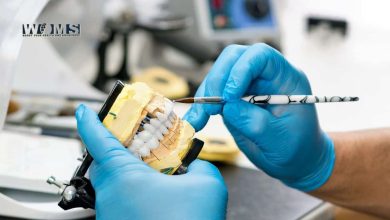This Is What Self-Care Actually Looks Like When You Have Incontinence

We often associate self-care with long baths, scented candles, and soothing music. While this can and does count as self-care, sometimes self-care looks a lot less glamorous than this — and that is especially true if you struggle with incontinence. There are steps that you can take to improve yourself and your quality of life if you have incontinence, and while they might not be as fun as a hot bubble bath, they will make a difference in your symptoms. From purchasing quality bladder control products to mapping out bathroom locations, here are seven self-care items that everyone with incontinence should be doing:
Talk to your doctor about your symptoms
If you’ve been experiencing incontinence, the first thing you should do is schedule an appointment with your doctor. They can help you pinpoint exactly what kind of incontinence you are experiencing and help you devise a treatment plan. They can also refer you to any necessary specialists. Different types of incontinence require different treatment plans, which is why it’s important to get expert guidance on what you are dealing with. In some cases, you might even be experiencing several different types of incontinence at once, aka mixed incontinence, in which case your doctor will help you tackle each one.
Carry the right supplies with you
While your doctor will work to determine treatments that will improve your incontinence, these often take time to work. In the short term, you’ll want to keep a steady supply of incontinence products on hand to keep you dry and comfortable as you go about your day (or sleep through the night). Bladder leakage pads will catch any stray urine and keep it from staining your clothes. However, you might also want to keep a change of clothes with you in case you have an accident. You can just leave the clothes in your car or bag so that you will always have them with you no matter what. For male urinary incontinence, men’s catheters are an increasingly popular and sanitary alternative, enabling men to maintain an active, stress-free lifestyle.
Keep a bladder journal
One of the things your doctor will likely recommend is keeping a bladder journal or a log of your symptoms. You’ll want to note when and how many times you use the bathroom, how much urine you pass, and how many times each you get the urge to urinate or have bladder leakage. It also helps to log what types of beverages you are drinking and how much, and the same goes for food as well. You should also note what activities you are doing when you experience urges or leakage, as certain kinds of strenuous activities can trigger incontinence. Over time, you’ll begin to see the patterns and be able to identify what factors make your incontinence worse.
Avoid incontinence triggers
All that journaling you just did is about to pay off. Once you begin to understand what factors seem to be associated with your incontinence episodes, try eliminating those from your routine to see if it improves your symptoms. Drinking too much fluid is often a major cause of incontinence, so watch how much you are drinking (don’t let yourself become dehydrated though!). Certain foods, such as citrus fruits, tomatoes, and spices, are known for irritating the bladder and worsening incontinence as well. However, not everyone has the same triggers, which is why it’s important to identify the ones that have the most impact on you.
Practice good bathroom habits
As you keep a bathroom log, you might notice that you tend to use the restroom at specific times of the day. If that is true for you, you can put yourself on a schedule and preemptively use the bathroom around those times each day. Try to space out your bathroom visits by 1.5 or 2 hours, if you can. If the urge to urinate strikes you more often than that, try waiting five to 10 minutes past the urge before using the bathroom. You can extend that amount over time as your bladder muscles become stronger. If you still tend to get some leakage, you might also find it beneficial to practice double voiding – or going to the bathroom twice within a couple of minutes to make sure that your bladder is completely empty.
Exercise your pelvic muscles.
In many cases, incontinence is worsened by weakened bladder muscles. The muscles relax when they shouldn’t, allowing urine to leak out of the bladder. To strengthen these muscles, your doctor will likely recommend a routine of Kegels, pelvic tilts, and other pelvic floor exercises. If you have trouble identifying the correct muscles or want to increase the intensity of the exercises, Kegel balls can help. Your doctor may also recommend other exercises, such as yoga for your pelvic floor, to further strengthen those muscles. (And if your problem is pelvic muscles that contract when they shouldn’t, there are also pelvic floor relaxation exercises that can help with that.)
Know where the bathroom is
You never know when you might get struck by the urge to urinate, so it’s a good idea to research bathrooms before visiting a new location. Try to identify at least two facilities in case one is closed for cleaning or the line is too long. If you are traveling, identify potential stops along the way so that you aren’t frantically trying to find somewhere when the urge hits you. Like we talked about in a previous step, it’s a good idea to carry incontinence supplies and a change of clothes with you wherever you go – and this is especially true whenever you travel. Don’t leave things to chance. Be prepared and you’ll be much less likely to have an accident.
Follow these steps to care for yourself when you have incontinence, and you’ll start seeing a difference in your quality of life. It takes time and persistence, but eventually, you will start to see improvements, and you’ll be so glad you stuck with it.




